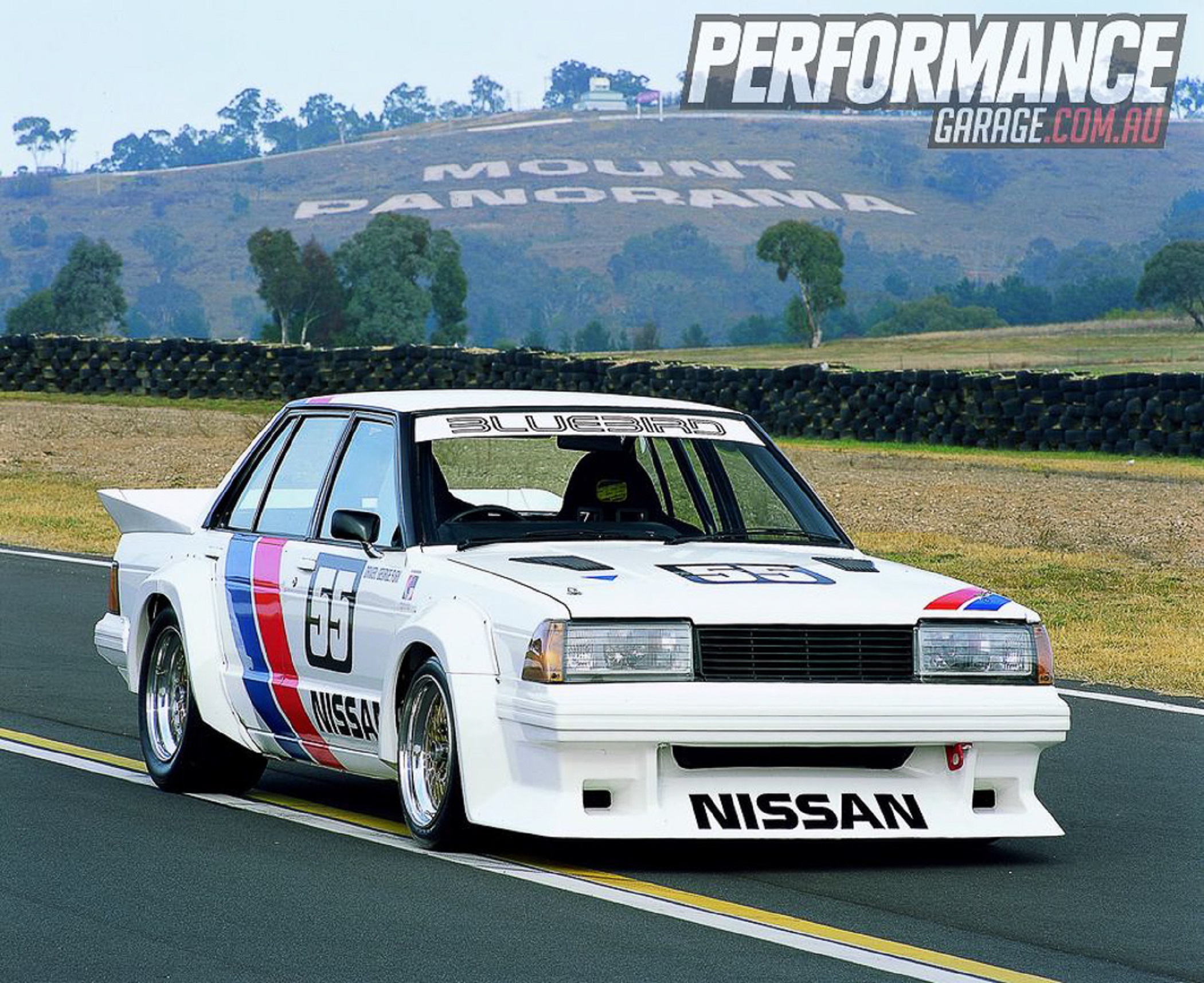Group C Bluebird Turbo + Video

The fastest Group C car ever to do a lap of the Mt Panorama circuit was the Nissan Bluebird Turbo, as driven by George Fury during the Top Ten qualifying shootout in 1984.

Group C Touring Cars weren’t just V8s, there were engine configurations from the Mazda rotary all the way up to a Jaguar V12 with 4-cyl, 6-cyl, V6 and V8 engines of various sizes in between, and the fastest Group C car ever to do a lap of the Mt Panorama circuit was the Nissan Bluebird Turbo, as driven by George Fury during the Top Ten qualifying shootout of 1984.

The Nissan Bluebirds made their Group C debut in 1981 with the intention of making it a competitive under 3L car, but its one-lap pace with the turbo wound up and rally driver ‘farmer’ George at the wheel certainly proved that it had been developed into an outright contender.

It wasn’t just a qualifying special either, Fury slipped and slid around a damp Lakeside Raceway to win the 6th round of the Australian Touring Car Championship ahead of that year’s champion Dick Johnson, at DJ’s home track no less, and the rain master Jim Richards who finished 4th in a BMW 635 CSi.

There were three cars built by the Australian Nissan team, and all were powered by a little 1.8L SOHC twin-spark Z18 4-cyl engine with a Garrett TO3 turbo set to produce 1.6bar (23.5psi) of boost for about 360hp in race trim, and in qualifying “we just wound it up as far as it (the wastegate) would go. It would probably be a bit under 3bar (44psi) and would be pumping out over 400hp (298kW+). It was good for one lap and then the turbo was junk” Fred Gibson explained.

The Bluebirds only weighed 1100kg so they were noticeably lighter than any of the V8 or V12 cars. Team manager the late Howard Marsden also claimed they were based on the European model, which is how they got away with running an independent rear end rather than a live axle like the locally-assembled road cars.
Comments
No posts found










